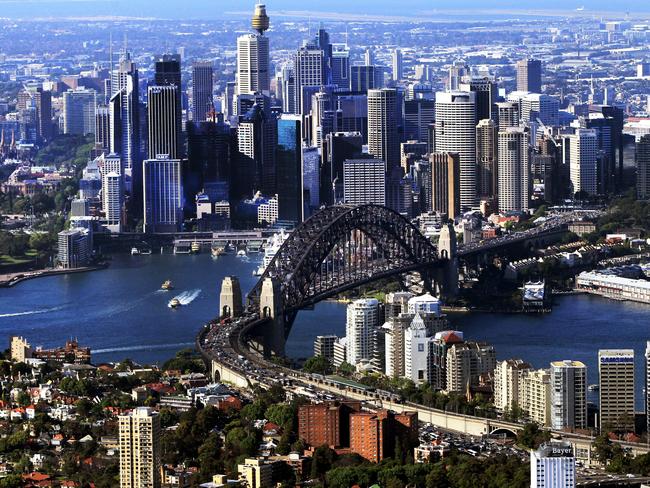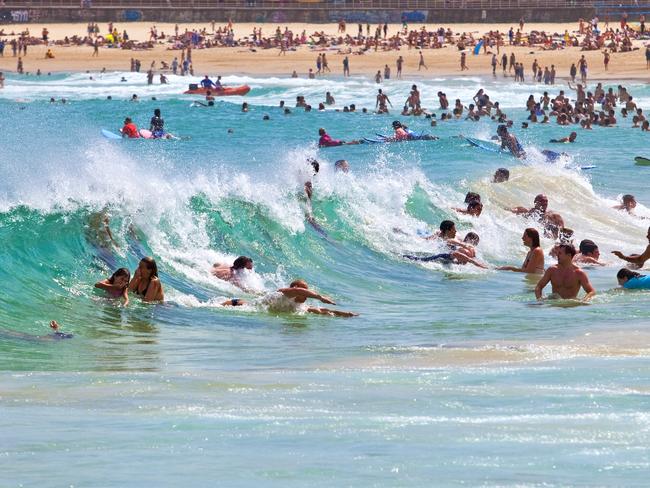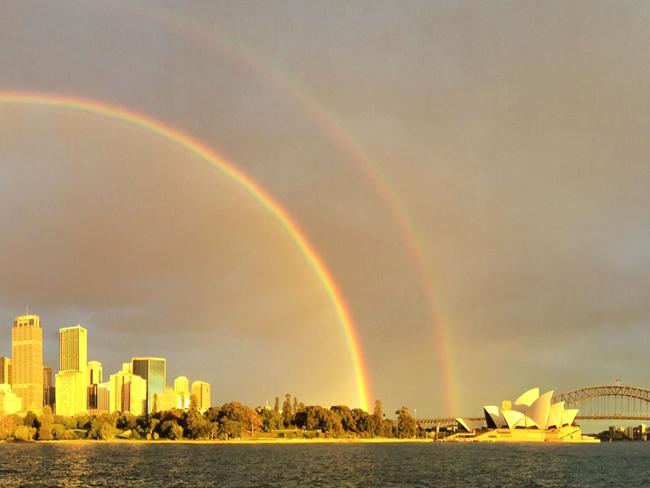Sydney is full of pessimists and this could impact its future
IT’S one of the most liveable cities in the world and an economic powerhouse, but this place’s residents don’t appreciate it.

IT IS one of the most liveable cities in the world and an economic powerhouse in Australia but it seems residents of the country’s premier city may not appreciate what they have.
A new survey from McCrindle Research has found that Sydneysiders are a pretty pessimistic bunch.
Half of the 1007 residents surveyed in August were categorised as “concerned pessimists” and said they thought life in Sydney was worse than five years ago, and would be even worse in five years time.
The Future of Sydney survey is the first in a series of reports on life in Australia’s capital cities.
More than half those surveyed nominated the cost of living (73 per cent) and housing costs (59 per cent) as the two biggest challenges. This was followed by traffic and commute times (52 per cent), job/employment (29 per cent) and pace and stress of life (29 per cent).
McCrindle founder Mark McCrindle has warned that the negative attitude could actually impact on Sydney’s future prosperity as “sentiment can become reality”.
Sydney is already losing residents to other states, with Melbourne set to overtake it as Australia’s largest city. Mr McCrindle said residents needed to get behind the NSW capital or it may lose its status as Australia’s premier city.
WHY SO UNHAPPY?
Mr McCrindle said he thought one of the biggest surprises was that most of those surveyed said they would consider moving out of Sydney.
In fact 23 per cent had “seriously considered it”, 21 per cent “somewhat considered it” and 22 per cent “slightly considered it”. Only 34 per cent said they had not.
This is despite the fact that NSW was recently found to be the country’s best performing economy by a large margin, according to analysis from the ANZ Bank.
The findings were also backed up by CommSec, whose economist Savanth Sebastian told Fairfax that “the NSW economy is well and truly ahead of the other states and territories now”.
While many appreciate Sydney’s beauty and its economic opportunities, there was a strong sentiment that infrastructure was not keeping up with growth.
More than 80 per cent of Sydneysiders believed that public transport, roads, hospitals and infrastructure were not keeping up with population. About 47 per cent believed it was “nowhere near keeping up”.
“These are strong responses and we put that down to being an emotional response, an exasperated response,” Mr McCrindle told news.com.au.

Sydney is adding 1400 people every six days, which is more than what the entire state of Tasmania adds in a year. The city has grown from 2 million people in 1959 to almost five million people now.
“It’s massive growth and ... Sydneysiders are seeing that or experiencing that, and this is having an impact on their lifestyle.”
Mr McCrindle thought Sydneysiders did not necessarily care about population growth but were more concerned that infrastructure planning was failing to cope. Only 35 per cent surveyed had correctly identified that Sydney’s population had grown to almost 5 million; 37 per cent thought the population was 3 million or less.
“So Sydneysiders are not experts on what population growth is, but they are feeling the impacts of that growth,” Mr McCrindle said.
And while Sydneysiders have higher wages than the Australian average, this had not kept pace with house price growth.
The average Sydney house price is now more than 13 times the average annual full time earnings of $77,000. In 1975 it was five times average earnings.
“Even on two incomes that makes it almost unaffordable for the next generation, who have to either live way out of the city or commute to the city,” Mr McCrindle said.
“House price growth has outstripped wages, and people are just on top of their mortgage, just on top of their rental and dealing with commute times, causing them to consider a sea change or a tree change.
“So the success of a city can almost be self-limiting and defeating.”
But Mr McCrindle said things were changing.
“We probably haven’t kept up, but it’s definitely boom time in terms of infrastructure development at the moment,” he said.
“Now infrastructure is well under way, I think things are starting to turn around.”
ARE SYDNEYSIDERS JUST WHINGERS?
World rankings still feature Sydney as one of the most liveable cities in the world. This year Monocle’s Quality of Life Survey put Sydney in fifth place, although it was beaten by Melbourne in fourth place. Tokyo took the top spot.
When asked whether Sydneysiders were just being whingers, Mr McCrindle said residents would probably be helped by a change in attitude.
If half of Sydneysiders thought life in Australia’s biggest city was worse, and getting worse, that sentiment could be destructive.
“If that is the sentiment, that can become the reality. There needs to be a mood change and this can help to turn things around,” Mr McCrindle said.
“Mood and pride of place is key for a place to thrive, it seems to be a self-fulfilling prophecy. I think it’s key for the city’s future. Melbourne is revelling in its global events, its art and cafe culture. Sydney has a bit to do to make sure it maintains its top national position.”
He said the 4.9 million residents of Sydney needed to get behind the city.
“Earnings and career opportunities are very good, job and employment is very strong, the opportunity for education and careers are very strong. Many people live here because that’s where their families live and they love the diversity of Sydney compared to other capital cities,” Mr McCrindle said.
“While the size is reason for complaint sometimes it also give us opportunities, that’s why there are so many global companies here, why there are so many culinary options and shopping opportunities.”


He said the most optimistic were young people, despite the fact that they hadn't enjoyed the asset growth from rising house prices that the older generation benefited from.
“They love the freedom, the climate is unbeatable ... I think the next generation are smart and educated and they will transform things but to do it they do need the support of planners and constructions ... to ensure the growth of infrastructure and assets and city amenity improves along with population growth.”
Mr McCrindle thought perhaps that those living in the mortgage belt, who may face long commutes, standing on a bus or queuing to be seen in a hospital were the most concerned. They may also have been living in Sydney for a while and feel that it is different to what it was like when they were growing up.
“It may be different to what it was and they ask, ‘Why is there this impact? Why can’t we have growth in hospitals and schools too?’ So that the life they knew when they were younger can be maintained today.”
COULD MELBOURNE OVERTAKE?
Another telling figure is that more than half of those surveyed were considering moving to another city in NSW or another state.
“So it’s not that Sydneysiders are thinking about moving because they are sick of living in the city, they are just worn out by living in Sydney,” Mr McCrindle said.
Mr McCrindle said this could already been seen in the numbers of people who were moving to other cities in Australia.
Last year 9336 people moved to Victoria from other states, Queensland had 5598 while NSW actually lost 5572 people.
“It shows that people are voting with their feet, again for cost of living or lifestyle change reasons. They are looking at their future viability and which city works best for them,” Mr McCrindle said.
While Sydney remains an attractive city with outstanding opportunities for employment, the results of the survey were an early indicator of future challenges, Mr McCrindle said.
“If you do get people moving out, and a brain drain, because of that cost, then that can have an impact on the future.”
Melbourne is already growing faster than Sydney and doesn’t have the same geographical limitations of Sydney, which is bound by the Blue Mountains, the Hawkesbury River and other landforms.
It is expected to surpass Sydney in 2053 to become Australia’s largest city and is exceeding Sydney’s growth by more than 10,000 people per year.
“Melbourne can continue to sprawl and they have worked hard on transport, on lifestyle and global events. Sydney needs to maintain its pre-eminence, it can’t rely on history,” Mr McCrindle said.
While Sydney had beautiful physical assets such as the harbour, if the lifestyle offered was not maintained, people would not only chose to live elsewhere, but perhaps locate their businesses elsewhere too.
“If businesses can’t attract people with talent because it’s too expensive to live in Sydney, that can result in a loss economically.”
The enormous population growth in Sydney created challenges for how it would accommodate new residents.
“How do we adjust to that growth? It needs investment and place making so that Sydney remains a premier destination, so that it doesn’t also become second in terms of status and attraction and as a global city,” he said.



